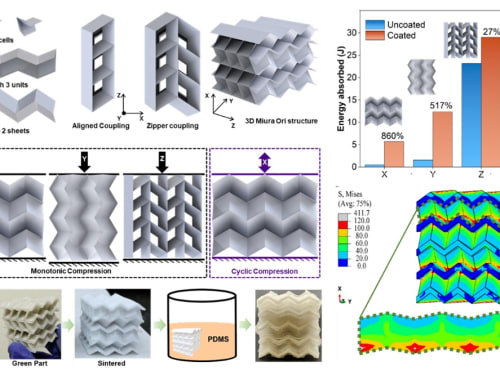Manufacturing & Materials
In high-stakes environments like semiconductor fabs, industrial shops, and hospitals, cleaning isn’t just about getting surfaces spotless—it’s about safety, performance, and environmental impact. That’s where Nano Cleaner 100 comes in.
Created by the team at DTL Chemical, Nano Cleaner 100 is a next-generation cleaning solution built for the modern era.
Our design introduces a unique approach to transform inherently brittle materials, such as ceramics, into adaptable and tough structures through the ancient art of origami, enabled by additive manufacturing (AM) and elastic coating. Traditionally, brittle materials fail catastrophically under stress, which limits their use in applications that require damage-tolerance behavior.
DRT-Sand™ is a novel materials innovation that transforms previously unusable desert or coastal sand into a functional construction-grade substrate through an advanced nanobonding process. Developed by Doctor T Company in Thailand, the system introduces a proprietary coating (TPoxy™) that binds each grain with a nanoscale film, resulting in engineered sand that is water-resistant, dust-suppressed,
The urban greenhouse has three patents granted in Mexico, allowing for sustainable and efficient vegetable cultivation with a 500% plant density, a 95% water consumption, and a 95% carbon footprint, reducing the distance between production and consumption.
Growing more plants to produce more nutritious and safe food in cities, consuming fewer resources. This is the goal of the Urban Greenhouse,
Thermoelectric based storage system designed to maintain precise temperature control for sensitive goods such as vaccines and food. The core problem it addresses is the inadequacy of current temperature control systems, which are often bulky, inefficient, and lack portability, energy efficiency, precise regulation, and remote control capabilities. Existing solutions also struggle with scalability and adaptability,
Globally, tens of thousands of wind turbine blades are being retired without scalable, sustainable reuse pathways. These blades—built from glass-fibre composites—are often landfilled, incinerated, or shredded into low-grade filler. At the same time, the construction industry is seeking cost-effective, fire-rated façade materials with a lower carbon footprint. This project proposes a transformative solution: a mobile,
This is a fast manufacturing process, an alternative to 3-D printing, for making thin panel parts (perhaps replacements for damaged International Space Station panels, astronaut-suit panels, etc.) by spraying together two laminar-flow (clear liquid sheets without air bubbles) epoxy hardener and resin.
Two computer-controlled pliable nozzles are used, one each for epoxy resin, and hardener.
Many modern devices and machines rely on external power sources such as batteries, fuel, or electricity from the grid. To enhance efficiency, reduce dependency on charging infrastructure, and enable operation in remote or emergency conditions, these devices could be equipped with self-power generation systems.
I have developed and requested patent for a device designed to prevent children and adults from falling off chairs. A common issue in both home and public environments (primary schools mainly). This simple yet highly effective product provides an extra layer of safety, ensuring greater peace of mind during daily activities.
Page 3 of 6










